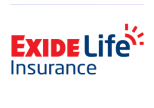LIC Jeevan Anand Or PPF: What's the Difference?
Due to high-risk factors, people usually get afraid of investing their money in the market. However, there are various plans and policies these days that give great results but have minimum risk involved. To involve more and more people in investing their money, the government launched Section 80C of the Income-tax Act, of 1961 which gives fixed-income avenues with tax savings. Two of the most popular avenues in this category are PPF and LIC plans.
Both the schemes have their own set of benefits as well as features. Let us Understand which one should be chosen to invest the savings by getting the understanding of both of them in detail.
Table of Contents
LIC Jeevan Anand vs PPF Scheme
To understand the difference between LIC and PPF, it is important to know the meaning of these two schemes.
Public Provident Fund(PPF):
In the fixed-income space, the Public Provident Fund (PPF) is a popular investment avenue among investors.
- A PPF account allows individuals to invest up to Rs 1.5 lakh each year and also provides a tax deduction under Section 80C of the Income Tax Act.
- The account has a validity of 15 years and the account holder is supposed to deposit a minimum of Rs 500 every financial year.
LIC Jeevan Anand:
LIC's New Jeevan Anand Plan is a participating non-linked plan that offers an attractive combination of protection and savings.
- This combination provides financial protection against death throughout the policyholder's lifetime with the provision of payment of lumpsum at the end of the selected policy term in case of his/her survival.
- This plan also takes care of liquidity needs through its loan facility.
Benefits of Public Provident Fund
Given below are a few benefits of the Public Provident Fund (PPF):
1. Lock-in Period
PPF is a long-term investment with a lock-in period of 15 years. This means that the amount accumulated in a PPF account can be withdrawn only at maturity, which is 15 years from opening the account. This tenure can be extended by 5 years at the end of the actual lock-in period. Premature withdrawals are allowed but only in case of emergencies.
2. Interest in PPF
Interest on the PPF balance is calculated every month and the amount is credited to the PPF account at the end of every financial year. The interest rates are pre-announced by the Government for each quarter.
Each month, the interest amount is calculated on the lowest PPF balance in the account after the 5th of every month to the last day of the month. Hence, PPF investors are advised to make contributions to their PPF account before the 5th of each month.
Important: Use the PPF calculator to get accurate interest rates and other details.
3. Minimum And Maximum Investment
Individuals need to make a minimum investment of Rs. 500 annually. A maximum investment of Rs. 1.5 lakh can be made in one financial year in a PPF account.
4. Taxation
PPF comes under the Exempt-Exempt-Exempt (EEE) category of tax policy which implies that the principal amount, the maturity amount, as well as the interest earned is exempt from taxes.
5. Loan Against PPF
A PPF account holder can take a loan against his PPF balance. However, the loan can be taken only between the beginning of the 3rd year and the end of the 6th year from the date of account opening.
The maximum loan amount is limited to 25% of the PPF balance at the end of – the 2nd year or the year preceding the year the loan is being applied.
Benefits of LIC Jeevan Anand Plan
LIC Jeevan Anand offers the following benefits -
1. Death Benefit
Provided all due premiums have been paid, the following death benefit shall be paid to the nominee.
On Death during the policy term: Death benefit, defined as the sum of Sum Assured on Death and vested Simple Reversionary Bonuses and Final Additional bonus, if any, shall be payable. Where the Sum Assured on Death is defined as higher than 125% of the Basic Sum Assured or 10 times of annualised premium.
This death benefit shall not be less than 105% of all the premiums paid as of the date of death.
Note: The premiums mentioned above exclude service tax, extra premium and rider premiums, if any. On the death of a policyholder at any time after the policy term: Basic Sum Assured
2. Benefits Payable At The End Of Policy Term
Basic Sum Assured, along with vested Simple Reversionary Bonuses and Final Additional Bonus, if any, shall be payable in a lump sum on survival to the end of the policy term provided all due premiums have been paid.
3. Participation in Profits
The policy shall participate in the profits of the Corporation and shall be entitled to receive Simple Reversionary Bonuses declared as per the experience of the Corporation during the policy term provided the policy is in full force.
The final (Additional) Bonus may also be declared under the plan in the year when the policy results in a death claim during the policy term or due for the survival benefit payment provided the policy is in full force and has run for a certain minimum term.
3. Optional Rider Benefit
LIC's Accidental Death and Disability Benefit Rider: LIC's Accidental Death and Disability Benefit Rider is available as an optional rider by payment of an additional premium during the policy term. In case of accidental death during the policy term, the Accident Benefit Sum Assured will be payable as a lump sum along with the death benefit under the basic plan.
In case of accidental permanent disability arising due to accident (within 180 days from the date of the accident), an amount equal to the Accident Benefit Sum Assured will be paid in equal monthly instalments spread over 10 years and future premiums for Accident Benefit Sum Assured as well as premiums for the portion of Basic Sum Assured which is equal to Accident Benefit Sum Assured under the policy, shall be waived.
Conclusion
LIC plans are protection-oriented in nature so you can choose term plans for providing a sense of financial relief to your family in your absence. For risk-free returns, you can choose a PPF investment scheme and build up a good corpus with disciplined investing every financial year.
Choose your goal and ensure that the investment schemes that you pick meet such goals and your risk appetite.
Also, Read:
Know Everything About Public Provident Fund (PPF)
EPF V/S PPF V/S VPF: Which One is Better?
Disclaimer: This article is issued in the general public interest and is meant for general information. Readers are advised not to rely on the contents of the article as conclusive and should research further or consult an expert in this regard.









































